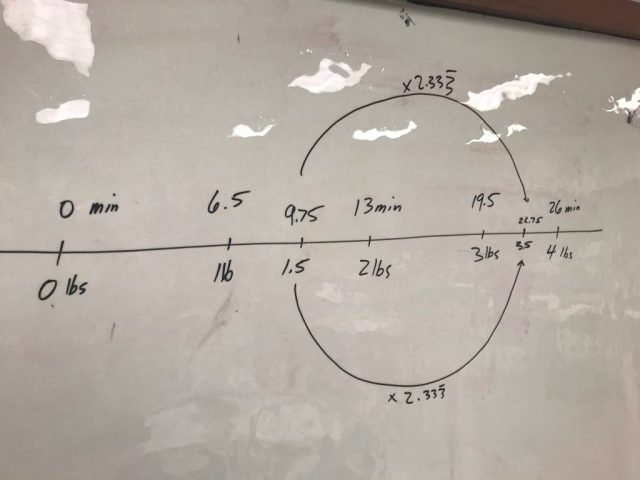Here’s a common similar triangles application problem that shows up in most middle and high school textbooks. A mirror is placed on the ground between two objects, showing two triangles with a bunch of measurements given and we’re supposed to find the height of one of the objects.
A typical approach to showing how this problem is modelled with similar triangles is to walk students through a full solution.

In lesson 1 of the video series that Kyle Pearce and myself have shared to make math moments that matter in your class we outline how why and how we can reshape our lessons to become more curious. If you haven’t yet watched the video series go ahead and watch video one now!
Let’s take this similar triangle problem and remodel it so it follows a Curiosity Path so we can fuel student sense making with similar triangles.
Recall that the first part of changing a problem to include more curiosity is to determine how you can withhold information to create anticipation.
Here’s my attempt at doing this for our students.

Have your students set up their page or whiteboards to record what they notice and what they wonder after watching this very short video clip.
After discussing what students notice and wonder, bring out the wonder (if your students didn’t already) — Will they see eye to eye through the mirror?
Allow your students to analyze the video again and have them predict if they could see eye to eye. Then hit them with these three images one at a time.



For each image, ask them to predict the answer to: Can Danielle and Dylan see eye to eye? Which image is it easy to see that the two can’t see eye to eye? Which image is harder? Why is it easier in one image over another? Have your students draw a picture to show you why Danielle and Dylan can’t see eye to eye in the second image? To bring students down the curiosity path a little further and deepen their investment into this problem ask them to predict where Dylan SHOULD stand so that they can see eye to eye.

What information is useful to know? Hearing your students insights at this moment is fuel for your formative assessment of their understanding and their problem solving toughness. When a student asks for the Danielle’s distance from the mirror ask “What would you do with that information if I gave it to you?” Listen closely to the answer of that question. You will discover quite quickly who is anticipating possible strategies and the reasonableness of those strategies and who’s strategies will need some assistance. Consider giving Danielle’s distance from the mirror to help update their prediction.

You can reveal the information as students request it.

Now that we’ve build up student curiosity by bringing them down the curiosity path we reach the fork in the road we outlined in Video 2 and 3 of our series. We can either rush to an algorithm or we can keep following the path towards making a math moment that matters.
In this activity we can fuel student sense making by having students experience what it’s like to see eye to eye. Students can mimic what they saw in the video to see how far a partner should stand away a mirror so the two partners will see eye to eye.

Students will arrange themselves as shown in the activity handout, determine how far one partner must stand to see each other in the mirror, then they test that distance to see if they actually see each other! Students will collaborate, peer and self assess, be active, and engage in purposeful practice.



Finally, students re visit the three scenarios presented at the top of the lesson to determine if Danielle and Dylan will see eye to eye. They essentially will prove if the triangles are similar or not.




An alternate or extension problem students can work on is “Where should we place the mirror so that they do see each other eye to eye?



















